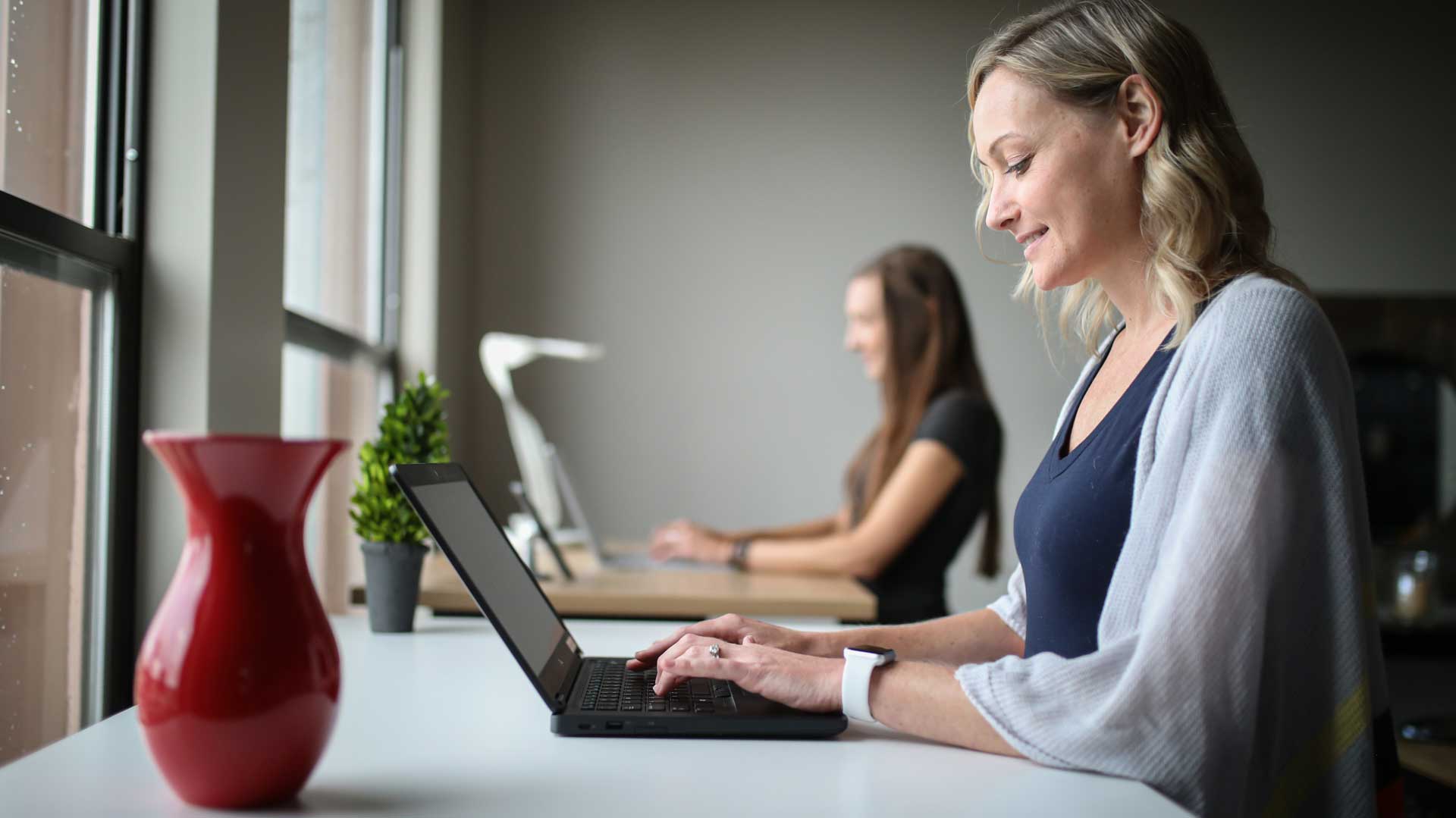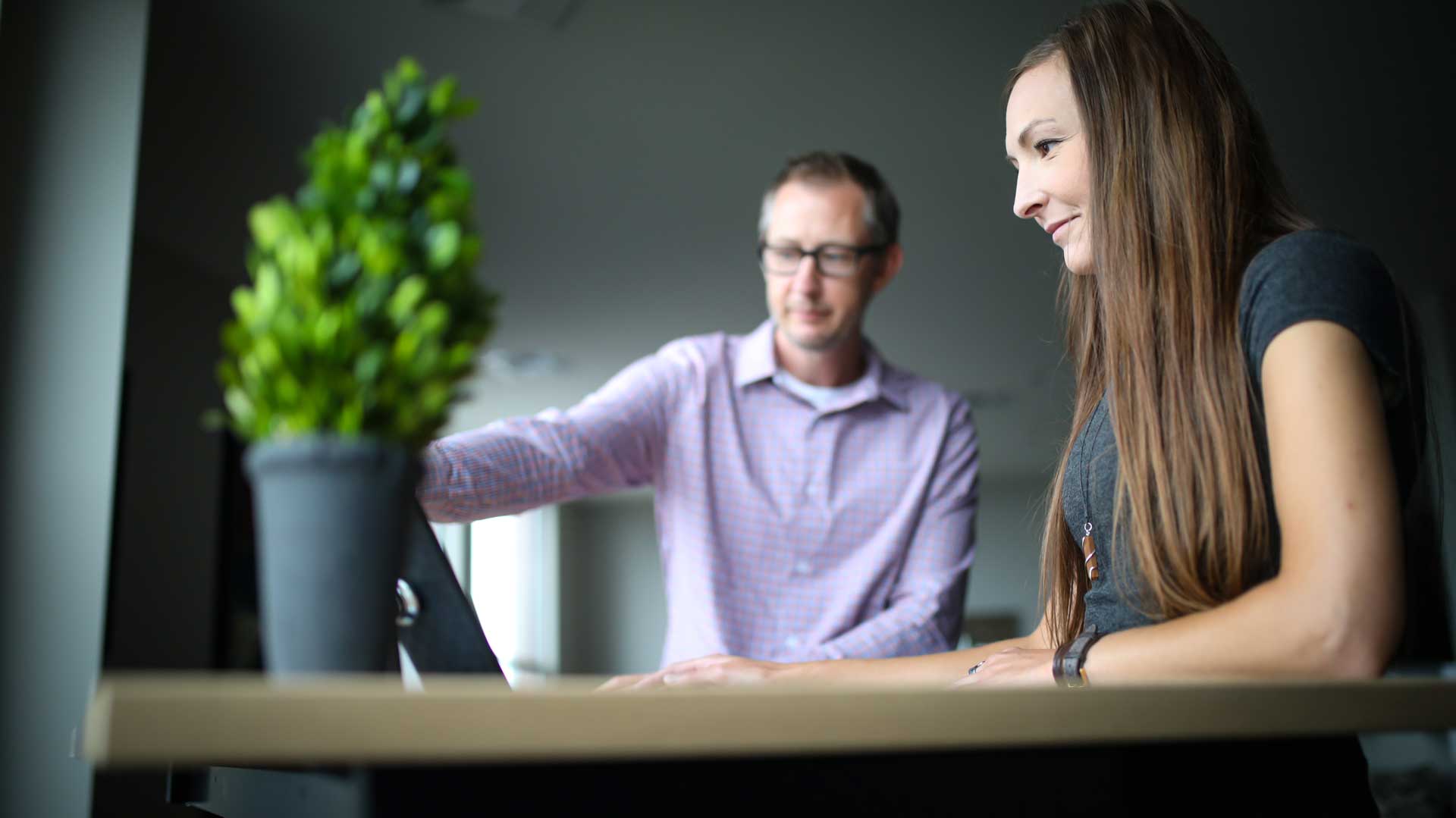
One of the top perks that employees look for can be summed up in one word: flexibility. In the workplace, flexibility means a number of things — flexible work hours, flexible time off, flexible office layouts. When it comes to office furniture, a conscious choice for an adaptable office helps maintain creativity, inspire collaboration, and maximize productivity.
An adaptable office layout is made possible by flexible office furniture:
- Seating, including office chairs that offer comfort and relaxation with a great degree of flexibility. Think adjustable height chairs, leaning stools, or perching stools that offer back support and allow workers to maintain a neutral posture. Seating also extends to chairs and sofas for collaboration and socializing.
- Communal desks or tables that extend the open office. These desks may be shared by many workers to stimulate creativity and help bring teams together.
- Lighter weight, sit-stand desks. Casters make these desks movable to enable multi-use spaces.
Desks, in particular, either enable flexibility or stifle it. Technology may allow us to work from anywhere on the planet, but office work is still defined by desks. Once you enter the office, they establish the atmosphere and carve out individual spaces within. So it makes sense that when we think of adaptable office furniture, a flexible standing desk on wheels comes to mind.
A standing desk helps create a light and airy vibe. With a generally smaller footprint, these desks may not appear as “office-y” as their clunkier ancestors, making homey design a lot more possible. Light weight, moveable desks allow solo or collaborative work, and can be easily re-configured. A standing desk with wheels allows a fluidity of space that can’t be matched.
The Link between Standing Desks and Talent
Although an office layout may be defined by desks, the work that gets done in that space depends on people. Flexible office furniture offers the chance to improve employee morale, productivity, and satisfaction. In fact, a survey from research firm Clutch found that workers rated “workplace flexibility” as one of the most important qualities for a work environment. Flexible office design – in the form of ergonomic desk chairs, standing desks, and movable furniture – demonstrates this quality. Whether you’re looking at recruitment, retention, or ongoing satisfaction, flexible office furniture makes a difference.
The reasons flexible furniture helps attract and retain talent are simple:
- Choice. There’s a powerful psychological appeal to having choices, even minor ones. According to Psychology Today, choices make people feel powerful and in control, and increase satisfaction and happiness. Even something as simple as the choice to sit or stand is attractive to younger and older workers alike. Job seekers in particular are attracted to choices, which give them a sense of control over some aspect of the situation.
- Movement. People like to move around, and the most thoughtful office designs cater to that need. Office designers often notice that informal office spaces are the most popular – a sort of social hub that brings together workers from different departments. Light and adaptable office furniture can be rearranged to encourage those interactions.
- Community. With increased virtual interactions, employees are realizing that face to face interactions are one of the most valuable activities in an office environment. According to a recent Forbes article, “How To Restrategize Your Office Layout For Post-Lockdown Collaboration,” standing desks are key to collaboration when used as informal spaces for team discussions.
- Appeal. Workers are attracted to relaxed spaces, with the easy vibe of a quiet coffee shop or an upbeat co-working space. According to marketing data firm Clutch, the most important benefit for employees is an appealing and comfortable workspace.
Flexibility is a key trait sought by all types of employees. For recruitment, office design attracts the best and brightest. When an interviewee first walks into an office, the environment creates a powerful first impression of the company image. An attractive and adaptable office appeals to creatives and millennials, and also offers a competitive advantage in attracting workers across categories.
Many employers are rightfully concerned about drawing workers back to the cubicle when they have had the experience of working from home. Flexible office furniture is one of the few tangible ways to show a company’s interest in employee wellbeing. That in turn helps retain talent by keeping workers happy and satisfied in the long term.
The Beauty of Flexible Office Furniture Goes Beyond HR
Offices and businesses are changing. Flexible office spaces are multi-purpose, with the ability to change functions with only minor adjustments. By using furniture and interior design rather than walls to define spaces (similar to a hotel lobby), an agile workplace can quickly adapt to ever changing conditions, instead of investing in short-term solutions.
Need to convert the desk area into a reception area for the big product launch? Or quickly come together for an impromptu demonstration? Or to rearrange teams as needs change in a rapidly growing company? No problem. Multi-functional, moveable, and streamlined office furniture makes it much easier.
The ability to flex helps with growth, allowing quick adaptation to changing needs in the workplace. When departments change, or more collaboration is needed, or private spaces are needed, furniture can be adaptable and allow for agile business.
Flexible workspaces have a range of benefits, including increased employee comfort, well-being, and productivity. Collectively, all of these benefits create a positive employee experience and company culture, the keys to attracting and retaining employees. And creating an office environment that is both agile and pleasing to employees – well, that’s just good business.





